Abstract
In one component of a multiple schedule of food presentation, monkeys acquired a different four-response chain each session by responding sequentially on three keys in the presence of four geometric forms (learning). In the other component, the four-response chain was the same each session (performance). Both d-amphetamine and cocaine, at the higher doses, disrupted the behavior in the learning component; the overall response rate decreased, the overall accuracy was impaired (i.e., percent errors increased), and there was less within-session error reduction. The performance component was generally less sensitive than the learning component to the disruptive effects of both drugs on rate and accuracy. After pre-feeding or during an extended session, the response rate decreased in both components, but accuracy was generally unaffected. When the four discriminative stimuli in both components were removed, the behavior was disrupted to a greater extent in the performance component. The disruptive effects of both drugs on behavior in the learning component were attenuated when the drugs were administered during the session after the response chain had been acquired. It was concluded that the greater sensitivity of the learning component to disruptive drug effects is related to the relatively weak stimulus control and/or the lower rate of reinforcement associated with that component.
Full text
PDF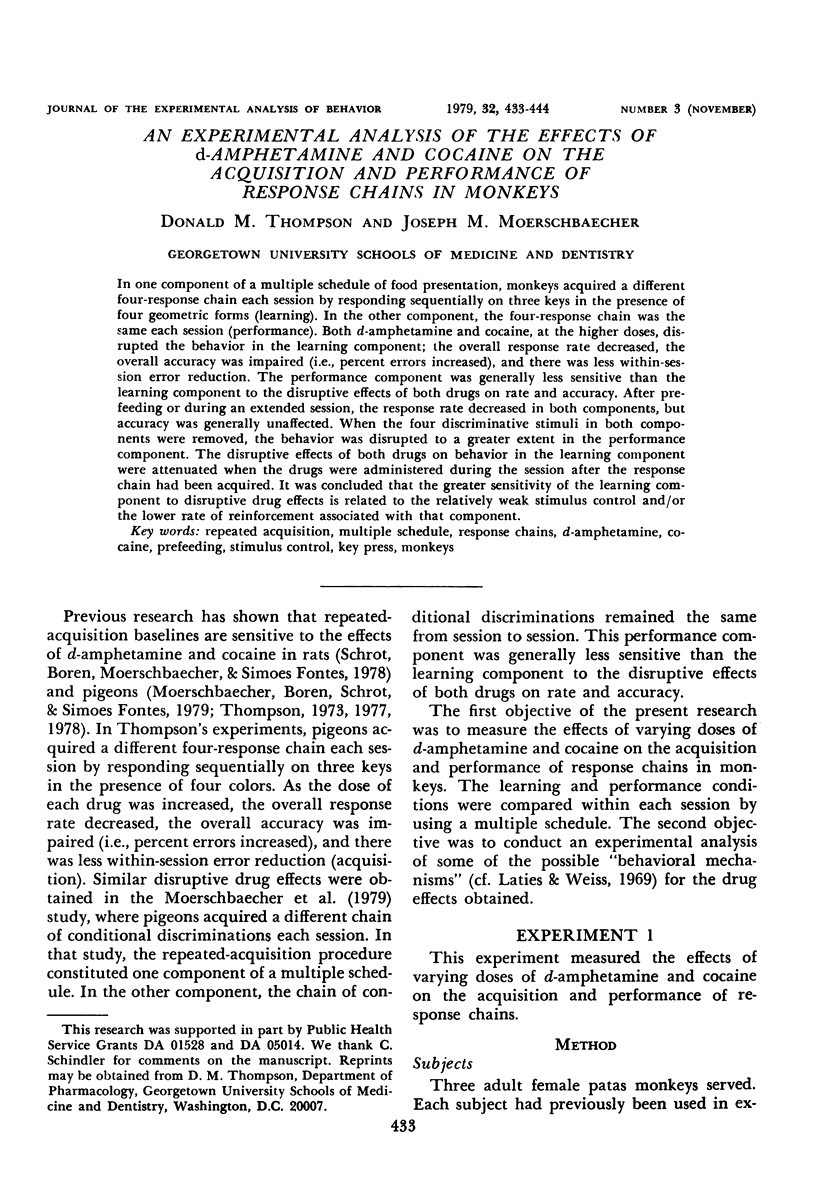
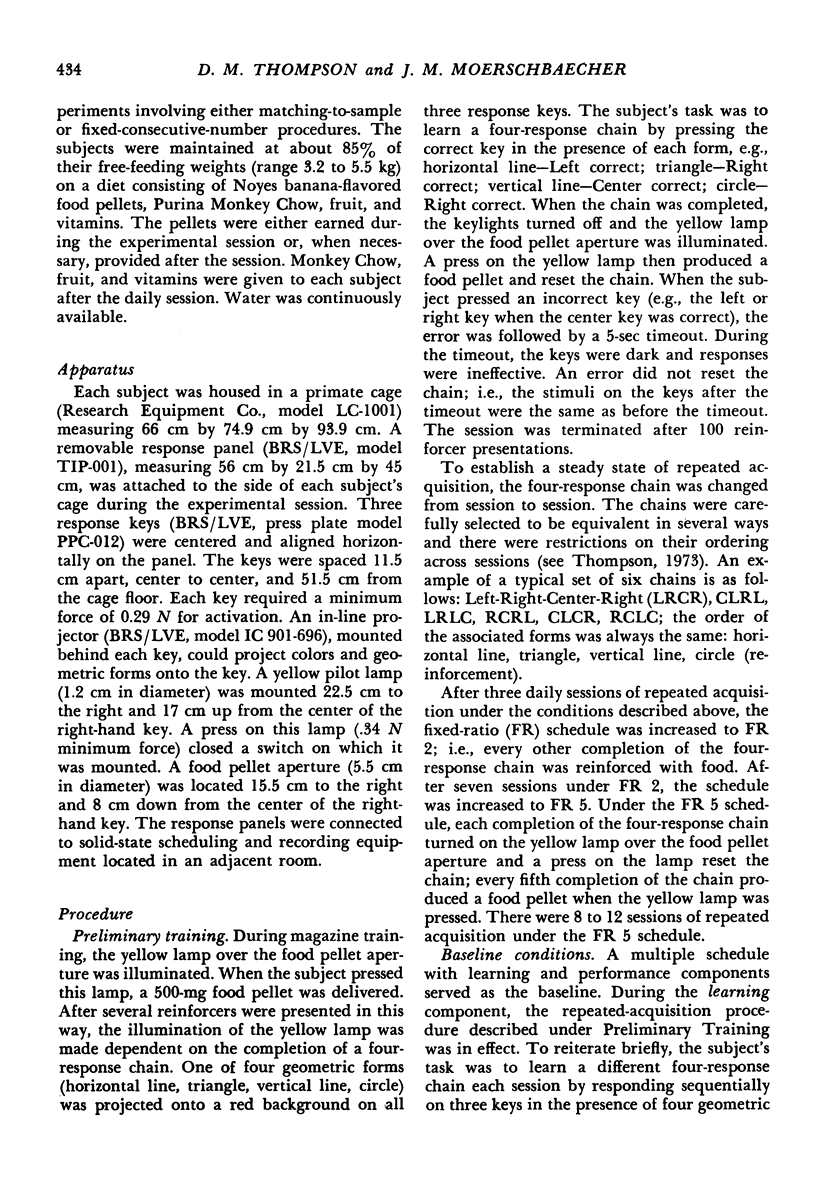
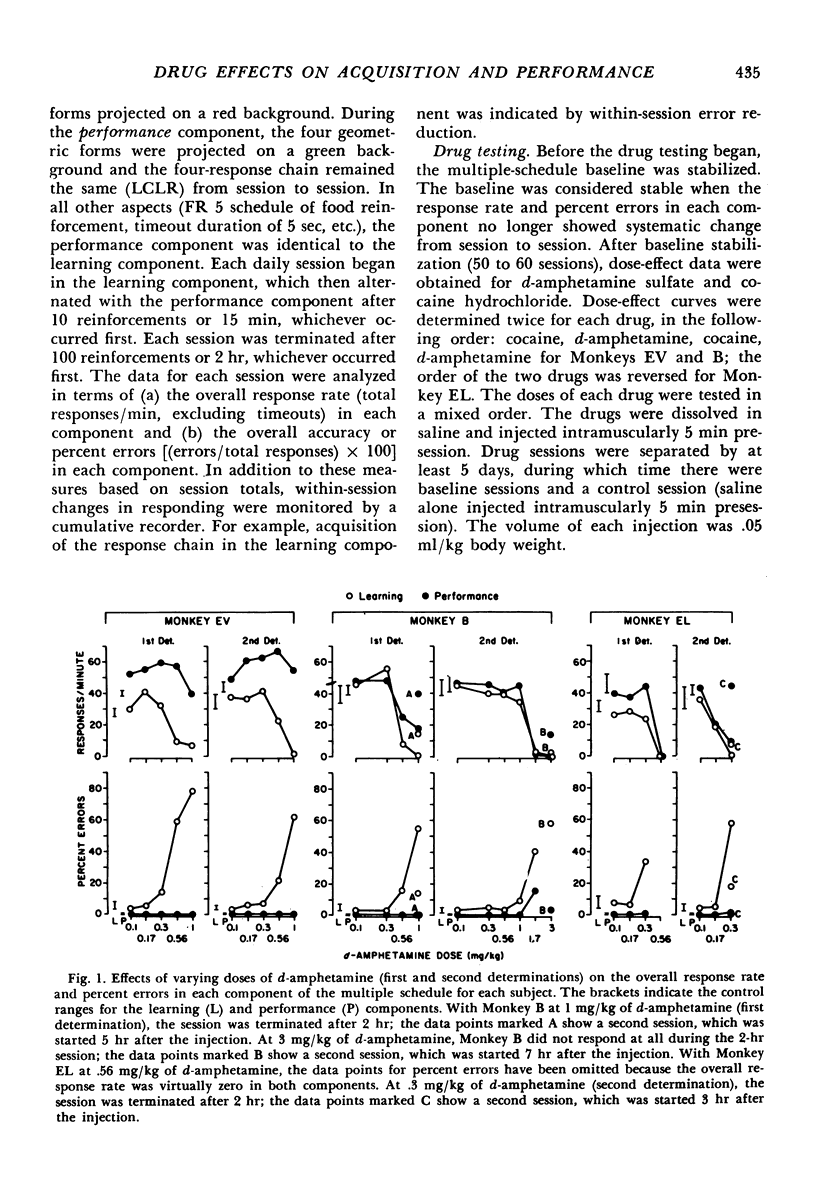
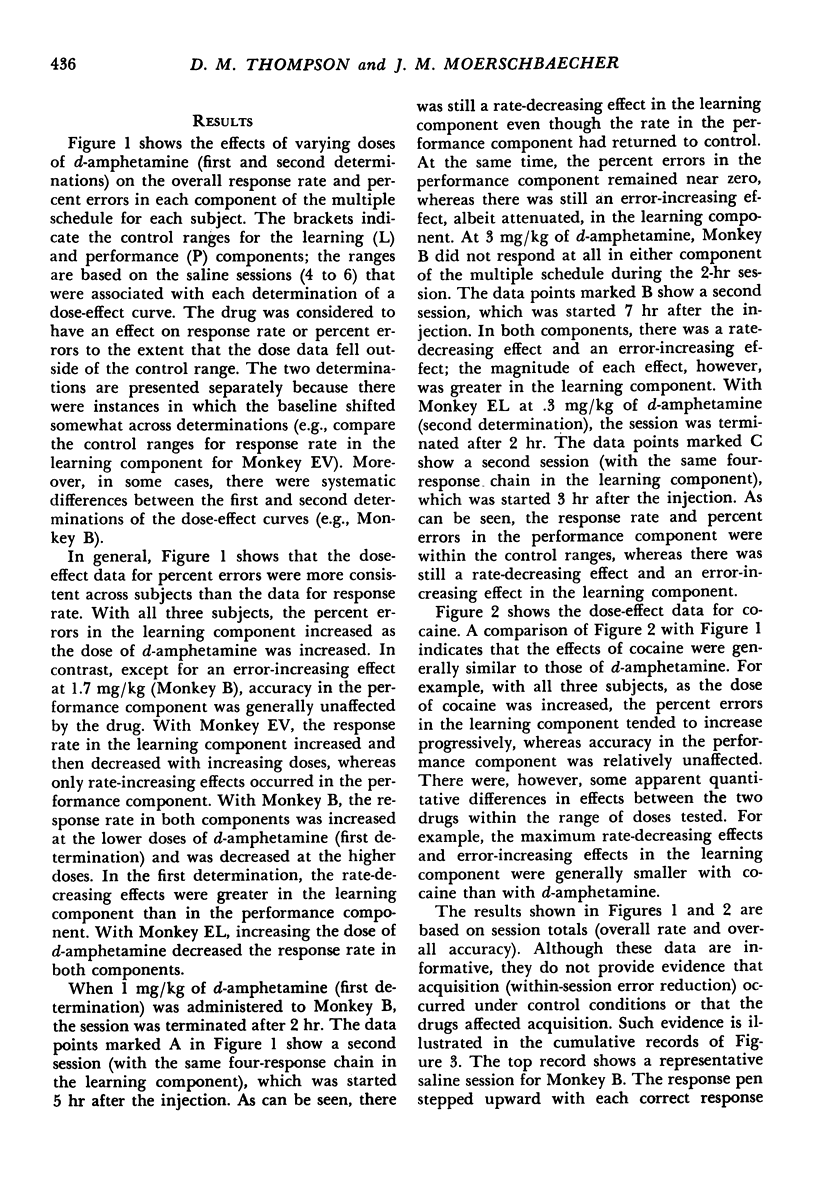
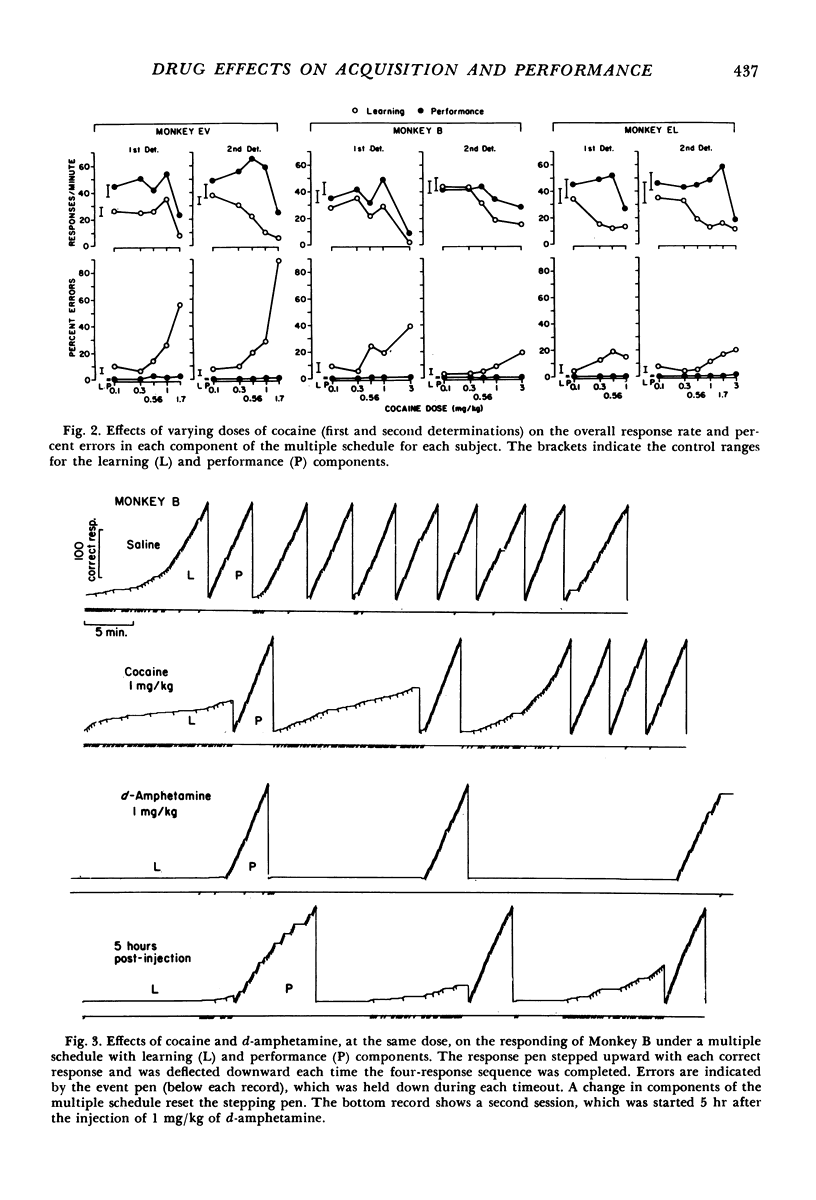
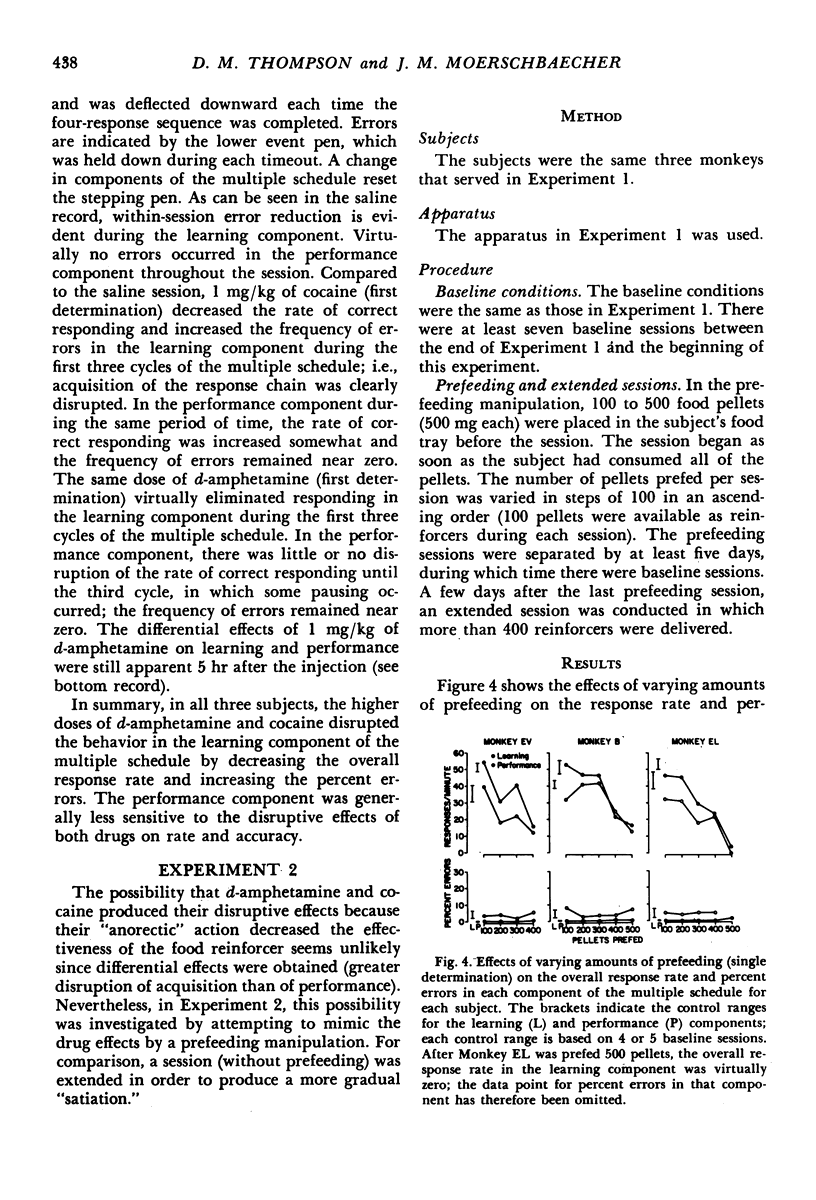
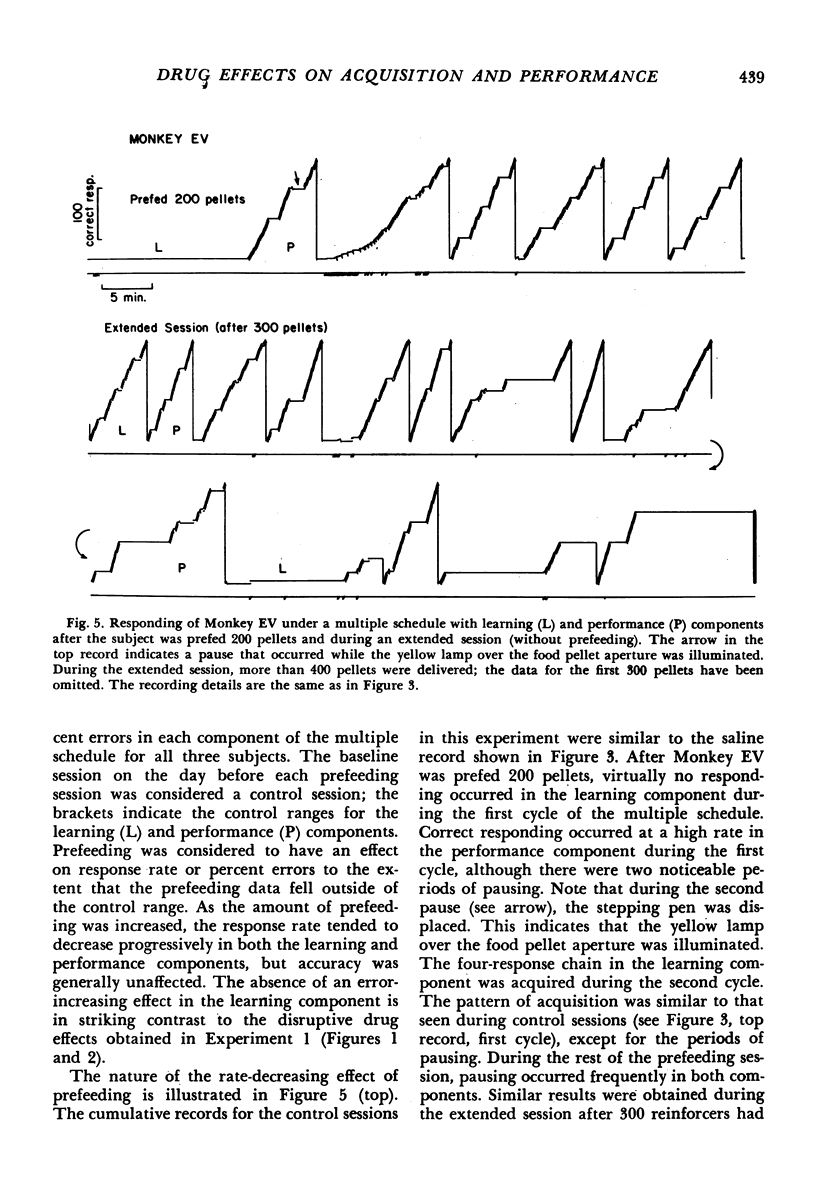
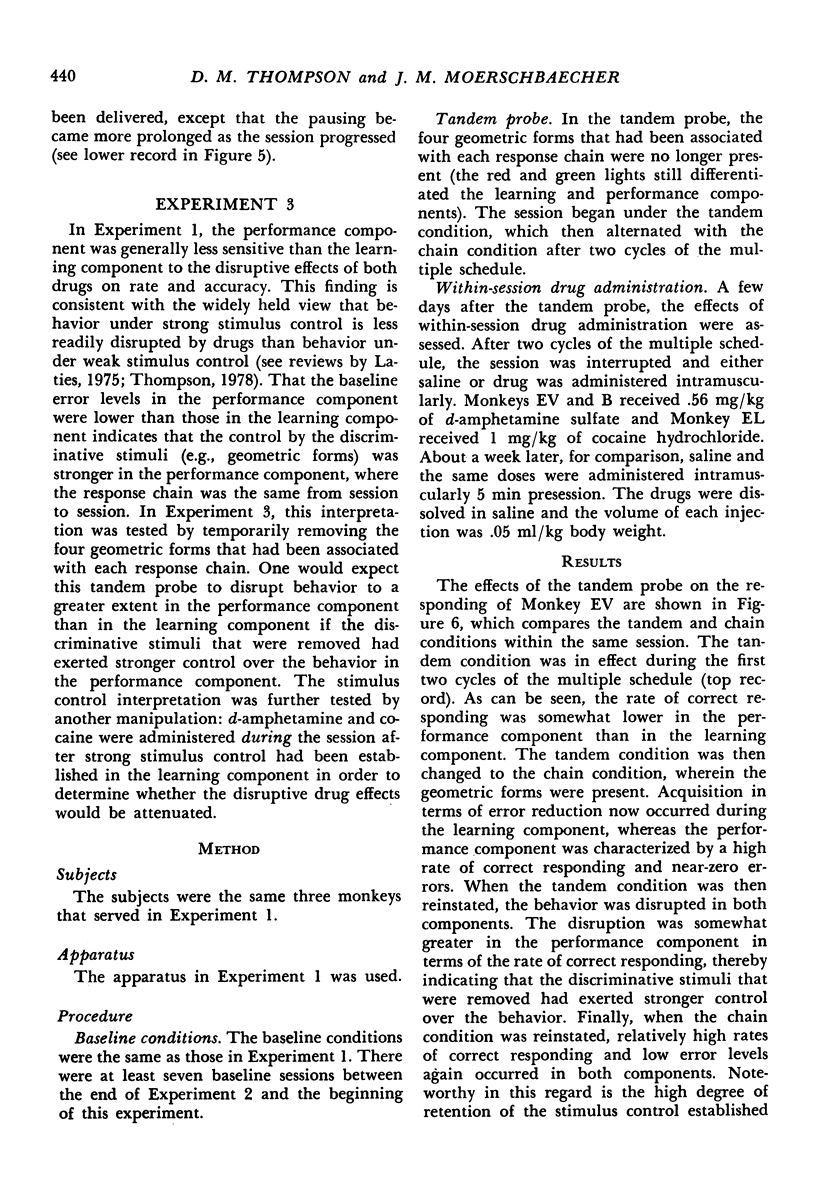
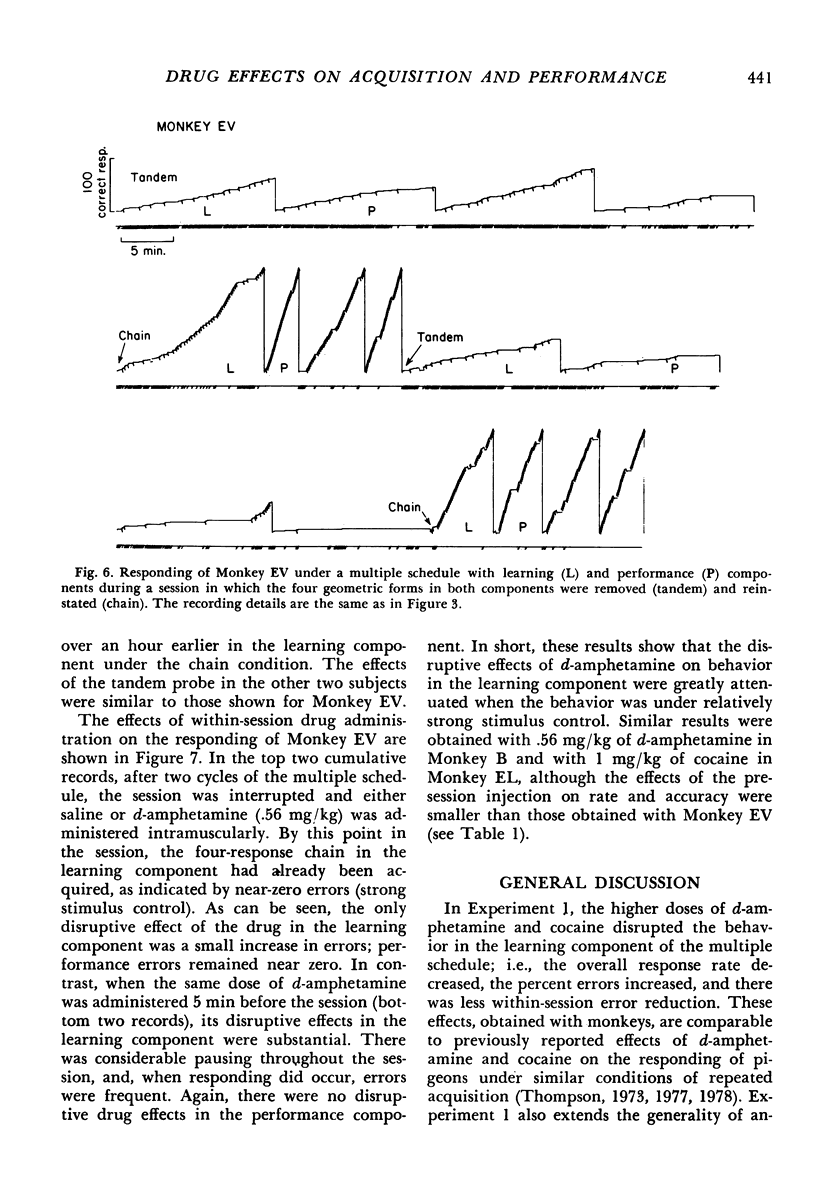
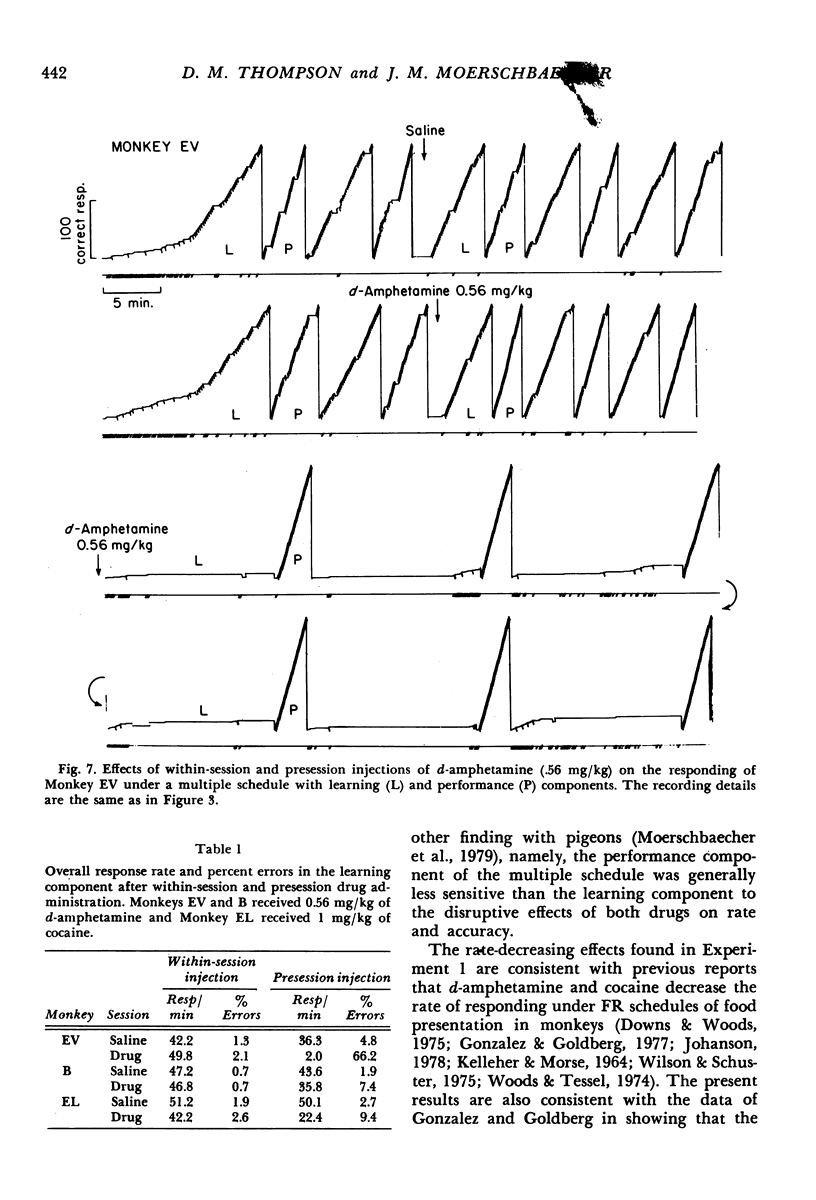
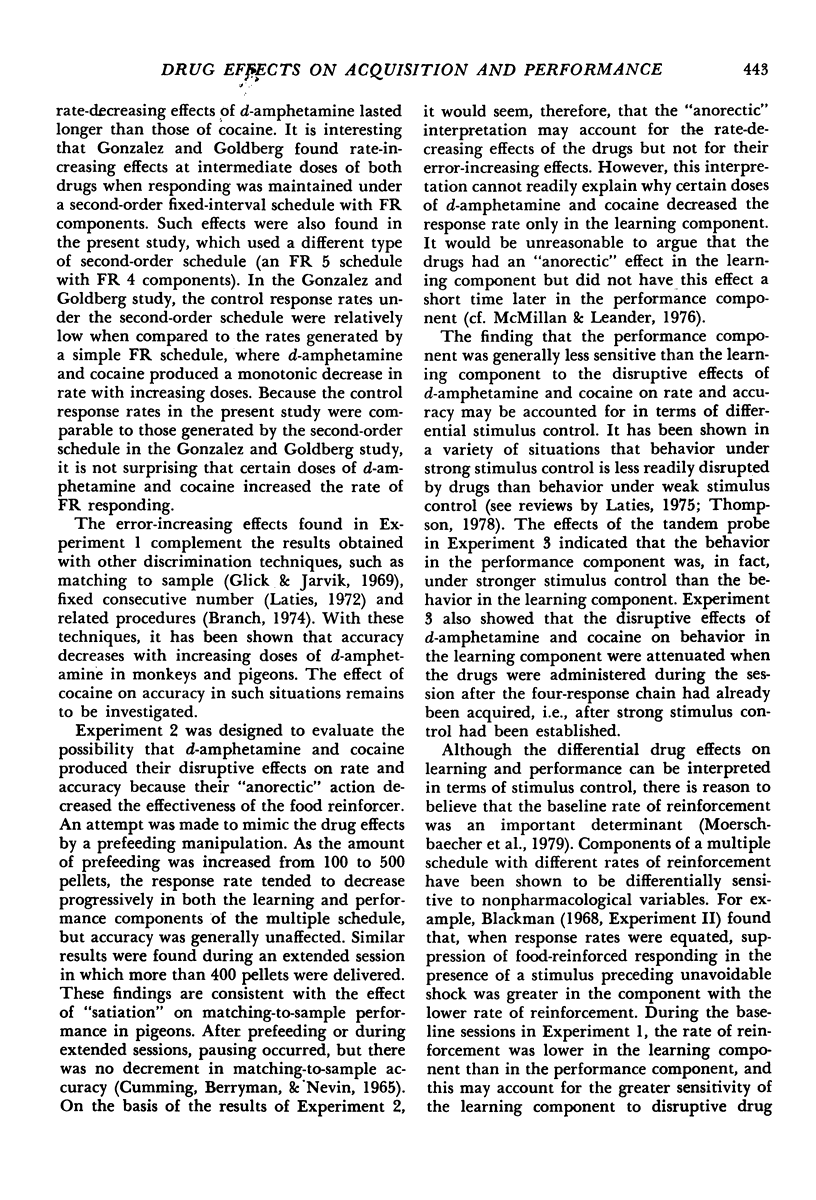
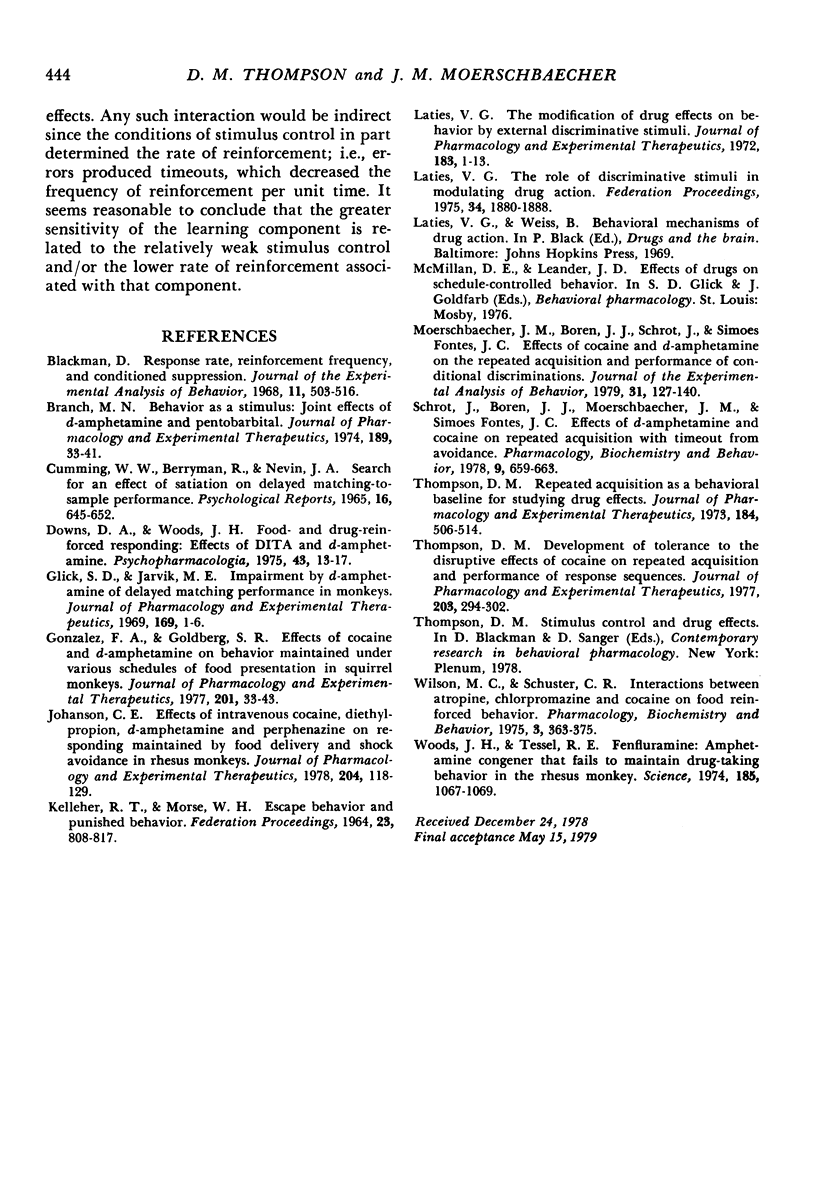
Selected References
These references are in PubMed. This may not be the complete list of references from this article.
- Blackman D. Response rate, reinforcement frequency, and conditioned suppression. J Exp Anal Behav. 1968 Sep;11(5):503–516. doi: 10.1901/jeab.1968.11-503. [DOI] [PMC free article] [PubMed] [Google Scholar]
- Branch M. N. Behavior as a stimulus: joint effects of d-amphetamine and pentobarbital. J Pharmacol Exp Ther. 1974 Apr;189(1):33–41. [PubMed] [Google Scholar]
- CUMMING W. W., BERRYMAN R., NEVIN J. A. SEARCH FOR AN EFFECT OF SATIATION ON DELAYED MATCHING-TO-SAMPLE PERFORMANCE. Psychol Rep. 1965 Apr;16:645–652. doi: 10.2466/pr0.1965.16.2.645. [DOI] [PubMed] [Google Scholar]
- Downs D. A., Woods J. H. Food- and drug-reinforced responding: effects of DITA and d-amphetamine. Psychopharmacologia. 1975 Jul 23;43(1):13–17. doi: 10.1007/BF00437608. [DOI] [PubMed] [Google Scholar]
- Glick S. D., Jarvik M. E. Impairment by d-amphetamine of delayed matching performance in monkeys. J Pharmacol Exp Ther. 1969 Sep;169(1):1–6. [PubMed] [Google Scholar]
- Gonzalez F. A., Goldberg S. R. Effects of cocaine and d-amphetamine on behavior maintained under various schedules of food presentation in squirrel monkeys. J Pharmacol Exp Ther. 1977 Apr;201(1):33–43. [PubMed] [Google Scholar]
- Johanson C. E. Effects of intravenous cocaine, diethylpropion, d-amphetamine and perphenazine on responding maintained by food delivery and shock avoidance in rhesus monkeys. J Pharmacol Exp Ther. 1978 Jan;204(1):118–129. [PubMed] [Google Scholar]
- KELLEHER R. T., MORSE W. H. ESCAPE BEHAVIOR AND PUNISHED BEHAVIOR. Fed Proc. 1964 Jul-Aug;23:808–817. [PubMed] [Google Scholar]
- Laties V. G. The modification of drug effects on behavior by external discriminative stimuli. J Pharmacol Exp Ther. 1972 Oct;183(1):1–13. [PubMed] [Google Scholar]
- Laties V. G. The role of discriminative stimuli in modulating drug action. Fed Proc. 1975 Aug;34(9):1880–1888. [PubMed] [Google Scholar]
- Moerschbaecher J. M., Boren J. J., Schrot J., Fontes J. C. Effects of cocaine and d-amphetamine on the repeated acquisition and performance of conditional discriminations. J Exp Anal Behav. 1979 Jan;31(1):127–140. doi: 10.1901/jeab.1979.31-127. [DOI] [PMC free article] [PubMed] [Google Scholar]
- Schrot J., Boren J. J., Moerschbaecher J. M., Simoes Fontes J. C. Effects of d-amphetamine and cocaine on repeated acquisition with timeout from avoidance. Pharmacol Biochem Behav. 1978 Nov;9(5):659–663. doi: 10.1016/0091-3057(78)90218-6. [DOI] [PubMed] [Google Scholar]
- Thompson D. M. Development of tolerance to the disruptive effects of cocaine on repeated acquisition and performance of response sequences. J Pharmacol Exp Ther. 1977 Nov;203(2):294–302. [PubMed] [Google Scholar]
- Thompson D. M. Repeated acquisition as a behavioral base line for studying drug effects. J Pharmacol Exp Ther. 1973 Feb;184(2):506–514. [PubMed] [Google Scholar]
- Wilson M. C., Schuster C. R. Interactions between atropine, chlorpromazine and cocaine on food reinforced behavior. Pharmacol Biochem Behav. 1975 May-Jun;3(3):363–375. doi: 10.1016/0091-3057(75)90044-1. [DOI] [PubMed] [Google Scholar]
- Woods J. H., Tessel R. E. Fenfluramine: amphetamine congener that fails to maintain drug-taking behavior in the rhesus monkey. Science. 1974 Sep 20;185(4156):1067–1069. doi: 10.1126/science.185.4156.1067. [DOI] [PubMed] [Google Scholar]


